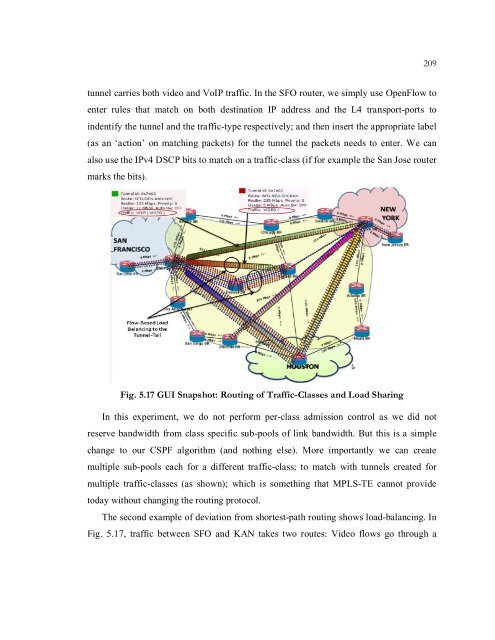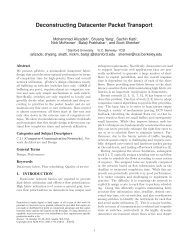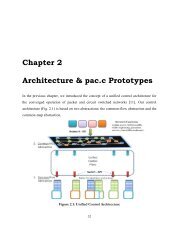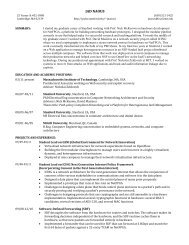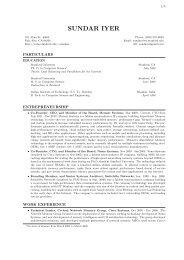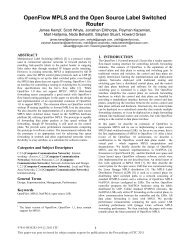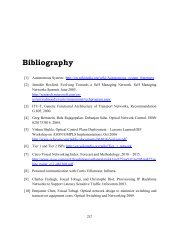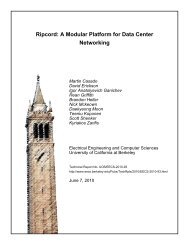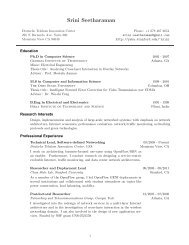Chapter 5 Introducing SDN Control in MPLS Networks - High ...
Chapter 5 Introducing SDN Control in MPLS Networks - High ...
Chapter 5 Introducing SDN Control in MPLS Networks - High ...
You also want an ePaper? Increase the reach of your titles
YUMPU automatically turns print PDFs into web optimized ePapers that Google loves.
209tunnel carries both video and VoIP traffic. In the SFO router, we simply use OpenFlow toenter rules that match on both dest<strong>in</strong>ation IP address and the L4 transport-ports to<strong>in</strong>dentify the tunnel and the traffic-type respectively; and then <strong>in</strong>sert the appropriate label(as an ‘action’ on match<strong>in</strong>g packets) for the tunnel the packets needs to enter. We canalso use the IPv4 DSCP bits to match on a traffic-class (if for example the San Jose routermarks the bits).Fig. 5.17 GUI Snapshot: Rout<strong>in</strong>g of Traffic-Classes and Load Shar<strong>in</strong>gIn this experiment, we do not perform per-class admission control as we did notreserve bandwidth from class specific sub-pools of l<strong>in</strong>k bandwidth. But this is a simplechange to our CSPF algorithm (and noth<strong>in</strong>g else). More importantly we can createmultiple sub-pools each for a different traffic-class; to match with tunnels created formultiple traffic-classes (as shown); which is someth<strong>in</strong>g that <strong>MPLS</strong>-TE cannot providetoday without chang<strong>in</strong>g the rout<strong>in</strong>g protocol.The second example of deviation from shortest-path rout<strong>in</strong>g shows load-balanc<strong>in</strong>g. InFig. 5.17, traffic between SFO and KAN takes two routes: Video flows go through a


